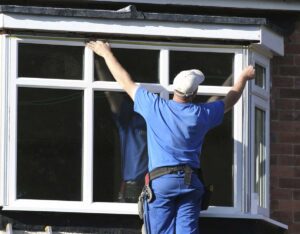11 “Faux Pas” You're Actually Able To Create With Your Double Glazing Materials
Understanding Double Glazing Materials: A Comprehensive Guide
Double glazing has ended up being a basic practice in contemporary building and construction and home renovation, mostly due to its undeniable advantages in energy performance, soundproofing, and overall convenience. At the core of this innovation lies a variety of products, each contributing distinct benefits to the double glazing phenomenon. This short article explores the various products utilized in double glazing, their properties, benefits and drawbacks, and how they affect the general efficiency of windows.
What is Double Glazing?
Double glazing is a type of insulation that involves 2 panes of glass separated by a gap, normally filled with air or inert gas. This setup serves a main function: to lower heat transfer in between the interior and outside of a building. As an outcome, double-glazed windows assist keep heat during winter and keep areas cooler throughout summer season.
Advantages of Double Glazing
- Energy Efficiency: Minimizes heat loss, decreasing energy expenses.
- Sound Insulation: Reduces outdoors sound, enhancing comfort.
- Condensation Reduction: Lesser condensation means less threat of mold.
- Increased Security: Tougher than single-pane alternatives, providing higher security against burglaries.
- Enhanced Property Value: Homes with double glazing are typically more appealing to purchasers.
Typical Double Glazing Materials
1. Glass Types
The effectiveness of double glazing is mostly affected by the kind of glass utilized. Below are the typical types of glass utilized in double glazing:
Glass Type
Description
Advantages
Downsides
Float Glass
Standard glass, usually used in standard applications.
Economical
Less insulation compared to Low-E glass.
Low-Emissivity (Low-E)
Glass coated with a thin metallic layer to show heat.
Outstanding insulation, preserves natural light.
Higher initial expense.
Tempered Glass
Heat-treated glass that is stronger and much safer.
More long lasting, resistant to impact.
Can be more expensive due to processing.
Laminated Glass
Glass layers bonded with a plastic interlayer.
Deals security and UV defense.
Much heavier and more costly choices.
2. Spacer Bars
Spacer bars are the materials that separate the 2 panes of glass in a double-glazed system. Different materials can be used for this purpose:
Spacer Bar Material
Description
Advantages
Disadvantages
Aluminium
Light-weight and stiff but conductive.
Long lasting and affordable.
Can lead to condensation due to heat transfer.
PVC-U
A plastic alternative, less conductive compared to aluminum.
Great thermal performance.
May not be as resilient as aluminum.
Warm Edge Technology
Typically includes a composite material.
Minimizes thermal bridging, improving performance.
Normally more pricey.
3. Gas Fills
The gap in between the panes of glass can be filled with air or specific gases to enhance insulation.
Gas Type
Description
Benefits
Downsides
Air
Regular air without any unique homes.
Affordable and adequate for numerous applications.
Lower insulation than gas-filled units.
Argon
Inert gas that is denser than air.
Outstanding thermal insulation.
More pricey than air but frequently justified.
Krypton
Heavier and more effective than argon.
Best insulation of the gas choices.
Much greater cost and requires specialized techniques.
Elements Influencing the Choice of Double Glazing Materials
When choosing materials for double glazing, a number of factors must be taken into account:
- Climate: The local environment has a considerable effect on energy efficiency, dictating the need for particular glass types or gas fills.
- Spending plan: Initial costs might exceed long-term benefits. Property owners ought to balance upfront expenditures with possible savings.
- Aesthetic Preference: Different frames and glass types offer a range of visual designs that need to complement the architecture of the home.
- Structure Regulations: Local building regulations may dictate specific materials, necessitating adherence to these guidelines.
Upkeep of Double Glazed Units
Beyond the setup of double glazing units, routine upkeep is important for durability and performance. Here are a few maintenance suggestions:
- Regular Cleaning: Use appropriate cleaners for both glass and frames to prevent accumulation of dirt and gunk.
- Check Seals: Periodically examine window seals for damage or wear, as compromised seals can significantly decrease insulation efficiency.
- Condensation Control: Monitor for condensation between panes, which may indicate seal failure and require repair.
Often Asked Questions (FAQs)
Q: How long do double-glazed windows last?
A: Typically, double-glazed windows can last anywhere from 20 to 35 years, depending on the quality of products and setup.
Q: Can I replace simply one pane of a double-glazed system?
A: It is generally advised to change the whole double-glazed system for ideal efficiency, as changing just one pane can lead to mismatching insulation properties.
Q: Are double-glazed systems more costly than single glazing?
A: Yes, double-glazed units usually have a greater upfront cost due to innovative products and building and construction, but they typically pay for themselves through energy cost savings.
Q: Will double glazing decrease sound pollution?
A: Yes, double-glazing effectively lowers outside sound, making your living environment more peaceful.
Picking the right materials for double glazing is an important step in enhancing energy efficiency, sound insulation, and the general convenience of a home. With double glazing prices , spacer bars, and gas fills offered in the market, understanding these parts can considerably impact efficiency. House owners should consider their unique requirements, choices, and regional aspects to attain the best outcomes from their investment in double glazing technology. Sticking to maintenance practices and remaining informed about advancements in glazing materials will guarantee long-lasting gain from this useful and necessary feature of modern architecture.
